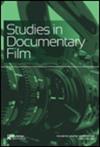前言:重温艾尔湖盆地景观
IF 0.8
4区 综合性期刊
Q3 MULTIDISCIPLINARY SCIENCES
Transactions of the Royal Society of South Australia
Pub Date : 2022-01-02
DOI:10.1080/03721426.2022.2056422
引用次数: 1
摘要
坐落在澳大利亚大陆的中心,被称为艾尔湖盆地(LEB)的现代排水系统在澳大利亚地理上一直占据着特殊的位置。它的集水区约为120万公里,目前占非洲大陆的五分之一,是世界上第四大内部排水盆地。与非洲(如乍得盆地)或亚洲(里海盆地)的同类盆地非常相似,艾尔湖盆地是一个宽而相对浅的克拉通内盆地,具有漫长的缓慢构造翘曲和沉降历史。继澳大利亚中部中生代早期的盆地之后,一个内部排水的沉积沉积中心在新生代的大部分时间里都存在。这导致了被称为Eyre湖盆地的地质构造,其范围主要是地下,由一系列沉积地层代表,特别是古新世-始新世Eyre组,晚渐新世-上新世Namba和Etadunna组,上新世-第四纪Wipajiri, Tirari和Kutjitara组,以及它们的侧向等量(参见Callen et al., 1995)。艾尔湖盆地的这些地质构造记录了一个多事件和气候变化的新生代历史,伴随着普遍的干燥趋势,导致了干旱到半干旱的环境条件,这种环境条件今天主导了大陆的大部分内陆地区(例如Martin, 2006;McGowran & Hill, 2015)。艾尔湖盆地的现代水系(LEB;参考Habeck-Fardy & Nanson, 2014)。LEB的干旱在许多环境变量中得到了清晰的反映(图1)。例如,盆地中部的年降雨量可低至~120毫米/年。年降雨量低,蒸发率>4000毫米/年,对土壤、动植物及其生态特征和演变提供了主要控制。虽然LEB的大部分地区被草和灌木覆盖,但这些干旱的景观促使早期探险家将LEB标记为澳大利亚的“死心脏”-这种观点显然忽略了LEB的环境,生态,地貌,水文,甚至只是地形多样性,在所有空间尺度上。然而,直到20世纪中期,科学家们才开始系统地接近和调查这种多样性,并且在LEB的早期景观工作中很快认识到环境条件在季节性到千年时间尺度上的变化本质。很明显,即使是澳大利亚大陆上海拔最低、可能是最干燥的地方——卡蒂坦达湖的盐覆盖湖底——艾尔湖——本文章由计算机程序翻译,如有差异,请以英文原文为准。
Foreword: Revisiting Lake Eyre Basin landscapes
Sitting at the heart of the Australian continent, the modern drainage system termed the Lake Eyre Basin (LEB) has always occupied a special place in the geography of Australia. With its ~1.2 million km catchment area, and currently draining one-fifth of the continent, it is the fourth largest internally draining basin in the world. Much like its global counterparts in Africa (e.g. Chad Basin), or Asia (Caspian Basin), the Lake Eyre Basin is a wide and relatively shallow intra-cratonic basin with a long history of slow tectonic warping and subsidence. Succeeding an earlier Mesozoic basin that existed in Central Australia, an internally draining sedimentary depositional centre existed through much of the Cenozoic. This resulted in the geological structure termed the Lake Eyre Basin whose extent is primarily subsurface and is represented by a series of sedimentary formations, notably, the Palaeocene–Eocene Eyre Formation, the late Oligocene– Pliocene Namba and Etadunna formations, and the Pliocene–Quaternary Wipajiri, Tirari and Kutjitara formations, and their lateral equivalents (see, Callen et al., 1995). These geological structures of the Lake Eyre Basin document an eventful and climatically variable history in the Cenozoic, accompanied by a general drying trend that led into the arid to semi-arid environmental conditions that dominate much of the continent’s interior today (e.g. Martin, 2006; McGowran & Hill, 2015). Superimposed on, but only partly overlapping the geological Lake Eyre Basin, is the modern drainage system of the Lake Eyre Basin (LEB; see, Habeck-Fardy & Nanson, 2014 for a review). The aridity of the LEB is clearly reflected in many environmental variables (Figure 1). For example, annual rainfall totals can be as low as ~120 mm/a in the central portion of the basin. Low annual rainfall combines with evaporation rates of >4000 mm/a to provide a primary control on soils, flora and fauna, their ecological characteristics and evolution. While much of the LEB is covered by grasses and shrubs, these arid landscapes prompted early explorers to label the LEB as the “dead heart” of Australia – a perspective that clearly ignored the LEB’s environmental, ecological, geomorphic, hydrological, or even just the topographic diversity, across all spatial scales. It was not until the mid-20 century, however, that scientists started to systematically approach and investigate this diversity, and early work on the landscapes in the LEB soon recognised the variable nature of environmental conditions over seasonal to multimillennial temporal scales. It became clear, that even the lowest and possibly driest place on the Australian continent – the salt-covered lake floor of Kati Thanda-Lake Eyre –
求助全文
通过发布文献求助,成功后即可免费获取论文全文。
去求助
来源期刊
CiteScore
1.40
自引率
12.50%
发文量
17
审稿时长
>12 weeks
期刊介绍:
Published since 1880, the Transactions of the Royal Society of South Australia is a multidisciplinary journal that aims to publish high quality, peer-reviewed papers of particular relevance to Australasia.
There is a particular focus on natural history topics such as: botany, zoology, geology, geomorphology, palaeontology, meteorology, geophysics, biophysics, soil science and environmental science, and environmental health. However, the journal is not restricted to these fields, with papers concerning epidemiology, ethnology, anthropology, linguistics, and the history of science and exploration also welcomed.
Submissions are welcome from all authors, and membership of the Royal Society of South Australia is not required.
The following types of manuscripts are welcome: Reviews, Original Research Papers, History of Science and Exploration, Brief Communications, Obituaries.

 求助内容:
求助内容: 应助结果提醒方式:
应助结果提醒方式:


